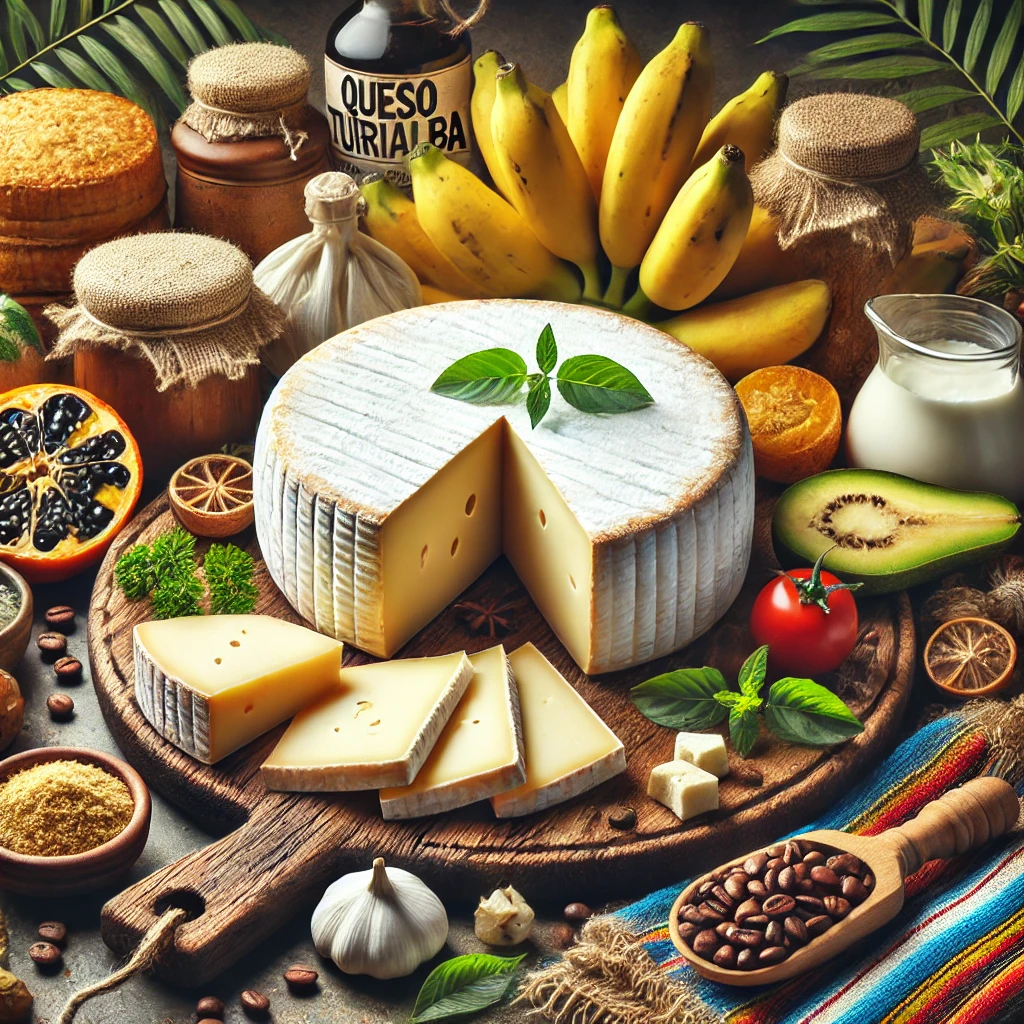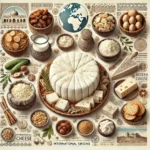Costa Rica is widely known for its lush cloud forests, volcanic soil, and coffee plantations—but hidden within its rural dairy culture is one of Central America’s most authentic cheeses: Queso Turrialba. Originating in the agricultural highlands of Turrialba, this cheese has become a national staple—fresh, soft, gentle in flavour, and deeply tied to Costa Rican identity.
Produced traditionally by small family farms rather than industrial dairies, Queso Turrialba reflects Costa Rica’s “pura vida” approach to food: simple, clean, locally made, and connected to the land.
🧀 What Is Queso Turrialba?
Queso Turrialba is a soft, fresh, lightly salted Costa Rican cheese known for its mild milky flavour and flexible texture.
Key Characteristics
| Feature | Description |
|---|---|
| Texture | Soft, sliceable, springy |
| Milk Source | Primarily cow’s milk |
| Taste | Mild, buttery, clean |
| Colour | Snow-white |
| Salt Level | Light |
| Aging | Minimal to none |
| Aroma | Fresh, dairy-sweet |
Its flavour is intentionally subtle—designed to pair with bread, plantains, corn tortillas, and tropical fruit rather than overshadow them.
🌄 Origin: The Turrialba Highlands
Turrialba, a fertile region surrounding a volcano of the same name, offers the ideal microclimate for dairy production:
-
cool misty mornings
-
mineral-rich volcanic soil
-
abundant grass pastures
-
natural humidity
Cattle graze freely on fresh mountain herbs and grasses, giving the cheese a clean, herbal sweetness. This terroir makes Queso Turrialba not just a dairy product, but a reflection of Costa Rica’s lush volcanic geography.
🥛 How Queso Turrialba Is Made
The cheesemaking process is simple yet crafted with precision:
1. Fresh Milking
Local dairy cows are milked daily, often within walking distance of production huts.
2. Gentle Heating
Milk is warmed to develop curd formation naturally, without industrial pasteurization.
3. Natural Coagulation
Rennet or natural cultures are added, encouraging soft curds to form.
4. Cutting & Draining
Curds are cut into cubes and drained slowly, preserving moisture.
5. Light Salting
Salt is added sparingly—to enhance, not dominate.
6. Short Resting Time
Minimal aging maintains the cheese’s signature softness and delicate flavour.
The result is a cheese that feels like a cross between fresh mozzarella and a mild farmer cheese, but with the unmistakable Costa Rican air of earth and pasture.
🍽️ How Queso Turrialba Is Eaten
Everyday Costa Rican Tables
Locals enjoy Queso Turrialba at breakfast (desayuno tico) with:
-
gallo pinto
-
thick tortillas
-
fried ripe plantains
-
black coffee
Street Food & Snack Versions
-
grilled cheese sandwiches
-
cheese-stuffed corn cakes
-
pan-fried slices with salsa Lizano
Traditional Rural Preparations
-
melted into casados (rice + beans + vegetables)
-
layered in empanadas
-
added to corn patties and pupusas
Queso Turrialba offers a non-salty, non-acidic melt, making it ideal for mild palettes and those who prefer clean dairy notes.
🧂 Flavour Profile
Costa Rican cheese culture generally avoids intense salting, smoking, or aging. Queso Turrialba follows this philosophy:
-
no overpowering salt
-
no fermentation tang
-
no rind
Instead, it relies on:
-
fresh mountain milk
-
slow, quiet draining
-
natural creaminess
Taste Notes
-
buttery mildness
-
gentle sweetness
-
soft pasture aroma
-
slight elastic bite
It melts like a dream but never becomes oily.
🌎 Global Context: What Is Queso Turrialba Similar To?
| Cheese | Similarities | Differences |
|---|---|---|
| Mozzarella (fresh) | Light, milky, sliceable | Less elastic & less watery |
| Queso Blanco | Mild, white | Turrialba is softer, less salty |
| Farmer’s Cheese | fresh curd | Turrialba is springier, creamier |
| Halloumi | firm, grillable | Halloumi is salty, Turrialba melts more gently |
Queso Turrialba is part of the fresh Latin cheese family but stands apart for its elegant softness and volcanic pasture influence.
🌱 Nutrition & Health
Per 100g (approximate):
| Nutrient | Value |
|---|---|
| Protein | 12–16g |
| Fat | 18–22g |
| Calcium | High |
| Sodium | Lower than most fresh cheeses |
| Carbs | Minimal |
Because the cheese is minimally processed, it appeals to:
-
low-sodium diets
-
natural food enthusiasts
-
farm-to-table culinary lovers
🏡 Cultural Significance in Costa Rica
Cheese in Turrialba is more than dairy—it is community identity and rural livelihood.
-
cheesemaking knowledge is passed down through families
-
production remains artisan rather than factory-based
-
sold at local stalls, morning markets, and roadside stands
Even urban Costa Ricans view Queso Turrialba as a taste of countryside authenticity.
⭐ Final Summary
Queso Turrialba is Costa Rica in edible form:
-
volcanic air
-
mountain grass
-
artisanal heritage
-
simple yet elegant dairy craft
It may not be aged or intense, but it holds deep culinary charm. Mild, melty, and naturally fresh, this cheese defines rural Costa Rican tables and continues to shape the country’s gastronomic identity.
Pure pastures. Pure milk. Pure Costa Rica.
FAQs — Queso Turrialba
1. What milk is used to make Queso Turrialba?
Primarily cow’s milk from Turrialba highland pastures.
2. Does Queso Turrialba melt well?
Yes, it melts smoothly without becoming oily or overly elastic.
3. Is Queso Turrialba salty?
It is lightly salted, much milder than most Latin American cheeses.
4. How is it eaten in Costa Rica?
With tortillas, gallo pinto, plantains, and coffee, or grilled in sandwiches.
5. What makes it unique?
Its volcanic terroir, artisanal dairy tradition, and soft, clean flavour.



